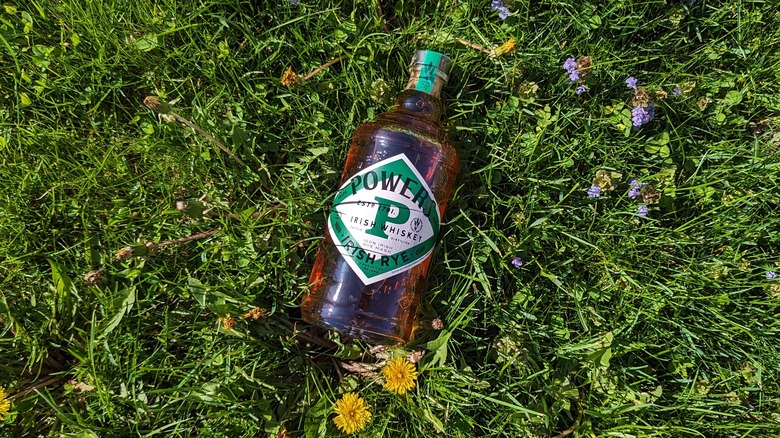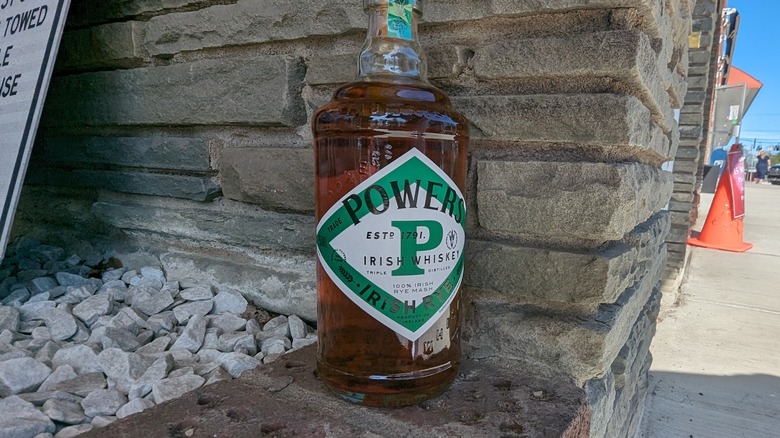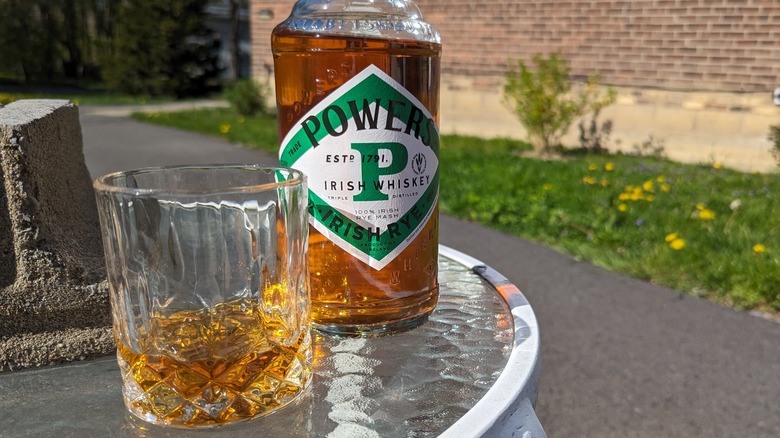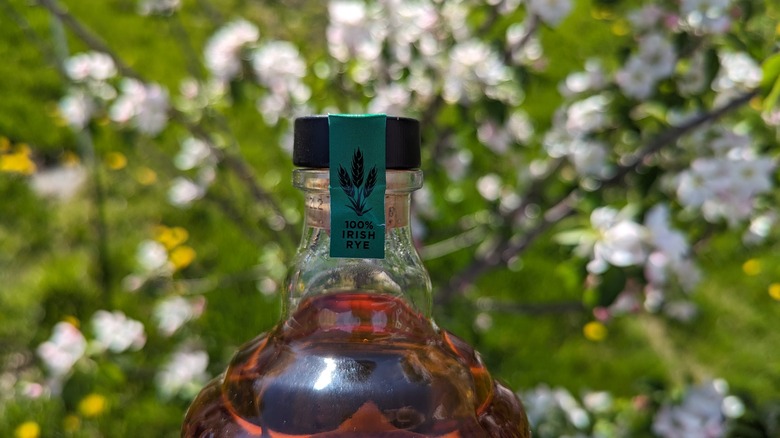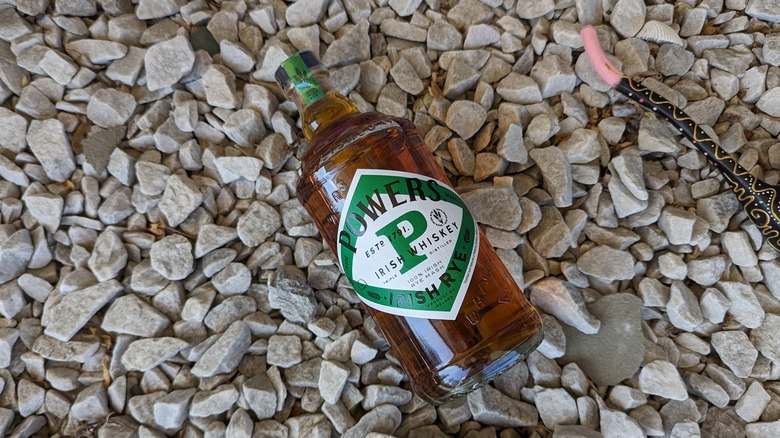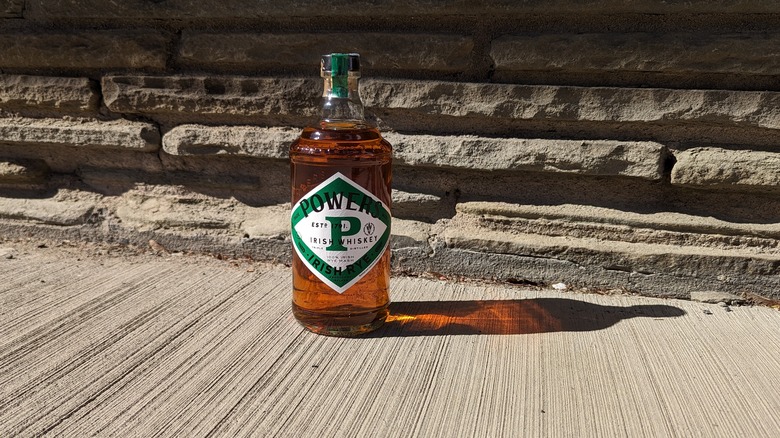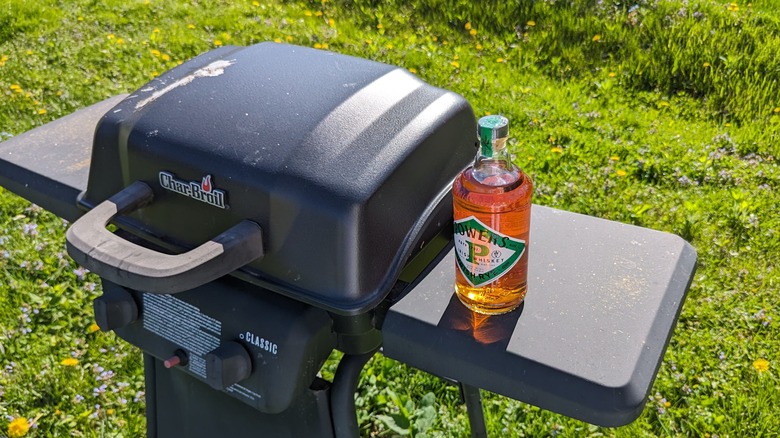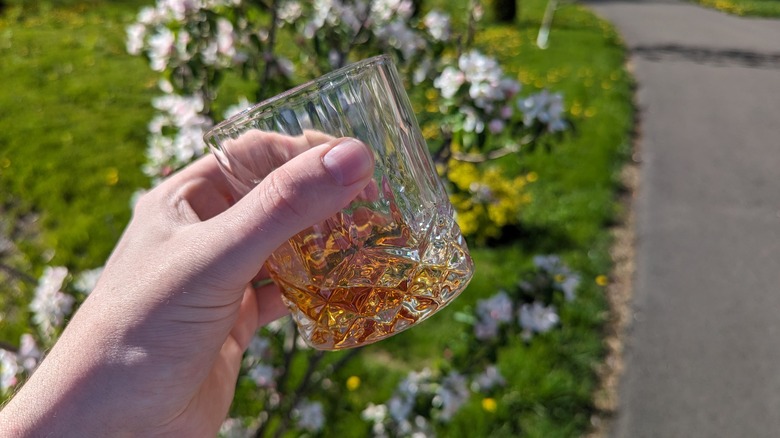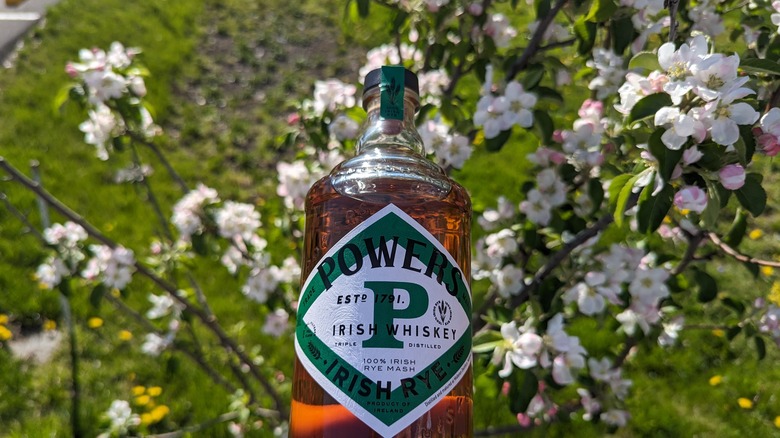Powers Irish Rye Whiskey: The Ultimate Bottle Guide
Historically, Ireland and the United States have had an extremely close relationship. A large portion of the U.S. is a proud part of the Irish diaspora, after all — celebrations of St. Patrick's Day in places like Chicago put many European efforts to shame — and many on both sides of the Atlantic like to drink. This special relationship has been explored and reinforced by numerous proudly Irish American whiskeys, including Powers Irish Rye.
Powers Irish Rye Whiskey first came about in 2023 and is made from a 100% rye mash bill. Now, most Irish American whiskeys involve a U.S. company giving their spirits an Irish twist. However, Powers has decided to go the other way, and produced an American-made spirit that's 100% Irish. In fact, every grain of rye used in this whiskey is grown in Ireland — on a farm close to Powers' ancestral home.
Can an Irish distillery take a traditionally American spirit (like rye whiskey) and produce something that will win over a purist? Well, if you're as curious as we were, read on to find out all there is to know about Powers Irish Rye Whiskey.
History of Powers Irish Rye
Powers Irish Rye doesn't have a long history itself, having only debuted in the U.S. and Ireland in February 2023. Still, the spirit has some strong links to the past. 19th and 20th century mash bills used by Powers provided some of the inspiration for the spirit, and trials at Irish Distillers' Midleton Distillery in Cork showed the company was on the right track. Powers distiller Eric Ryan also attributed (via Whisky magazine) part of the spirit's success to "the generations of Powers distillers who considered rye grain to be a unique component of their craft." Ryan also spoke of the difficulties the distillery faced in producing the bottle, including farming the rye itself, which isn't easy. Brewhouse throughput was also reduced, and the spirit had to be fermented for a longer period.
The company behind it has a history stretching back over 200 years. The distillery was originally founded by James Power back in 1791. Based in a Dublin pub owned by Power, it was a small operation that produced roughly 6,000 gallons of whiskey a year. As with many Irish distillers, Powers had many problems in the early 20th century and struggled to survive. Its main product, Gold Label, was also changed from a traditional single-pot still whiskey to a blend. Powers merged with Jameson in the 1970s, and production shifted to Cork. In the modern world, Powers does have a single-pot still whiskey in its product line with John's Lane. Power's Irish Rye now joins and expands that product line.
What does Powers Irish Rye taste like?
Being a rye — and a 100% rye at that — Powers' effort is a spicy, flavorful drink with a good degree of sweetness (though not as sweet as bourbon). Orange is prevalent both on the nose and on the palate, and there's a hint of maraschino cherry there, too. The spicy side really stands out in the glass' finish — with a pepperiness maturing into a medley of mild chili flavors.
There is some vanilla — courtesy of its time in an oak barrel — though not as much as you'll find with most bourbons. Since it's also rye (or a grain-based spirit), it doesn't take a ton of searching to pick up on a few rye bread notes, especially on the nose. Coming in at 43.2% ABV, the Irish spirit is on par with many traditional releases from across the Atlantic. In fact, American rye fans may find it a touch lighter in terms of alcohol content than many of its U.S.-distilled cousins.
All in all, this is far better than you usually find at the bottle's price point. It's not the most complex drink in the world, but it's in no way unpleasant. While you can happily drink it neat, you won't be getting the most out of this whiskey that way. In that sense, it does its best work in a cocktail, and Powers Irish Rye can beautifully elevate something like a Manhattan or an old fashioned.
How is Powers Irish Rye made?
Powers doesn't provide many public details regarding its preparation process, so we can't say for certain how Powers Irish Rye is made. However, chances are it's not too dissimilar from how other rye whiskies are distilled. It's made from 100% Irish rye, which is grown at Cooney Furlong Farm in County Wexford.
Powers had to commission the crops for this venture, as large-scale rye farming wasn't a thing in modern Ireland. As with similar spirits, the rye is used to create a mash which is then fermented for 100 to 180 hours and consists exclusively of rye. The fermentation creates alcohol, and the distillation process increases the concentration of that alcohol — leading to whiskey.
A variety of American oak casks are then used to mature the spirit, which heavily influences the end result depending on the wood and aging length. The total maturation time on Powers Irish Rye is said to be around five years. Once that's complete, the end product is bottled up and sent out to distributors.
How to drink Powers Irish Rye
As we mentioned before, you can drink Powers Irish Rye on its own or over ice, and you aren't going to have an unpleasant time. However, to experience it at its best, you'll want to include it in one of the many cocktails that calls for rye (or a similar dark spirit).
It's ideal for an old fashioned, as the classic cocktail serves to elevate Powers Irish Rye's natural flavors. The oranges, cherries, spiciness, and sugary sweetness will all be amplified and improved by the cocktail's other ingredients as well.
The Manhattan (a cousin of the old fashioned) does a similar thing. Fans of a dry Manhattan may find Powers' effort perfect, as many ryes contain a good amount of corn in the mash bill, and tend to be sweeter than this version as a result. However, keep in mind that other ingredients, like the vermouth used, will also have a huge impact on the cocktail's final profile.
Powers Irish Rye and Powers Gold Label
Distilleries and blenders can have fairly similar outputs across product lines. Johnnie Walker, for example, releases a wide array of products with a distinct variation in things like quality along with characteristics like sweetness, smokiness, and various other factors — but it's all distinctly Scotch. In that sense, Powers has made a brave choice here, as its Irish Rye is absolutely nothing like the rest of its output.
In fact, the company's main product, Powers Gold Label, is preferable to Jameson's in some whiskey fans' eyes — yet Powers Irish Rye is absolutely nothing like it. One is a blended Irish whiskey, the other is a very nice rye. Even someone who's less experienced with whiskey would likely be able to tell these two expressions apart in a blind taste test.
Gold Label is initially sweeter on the palate, with notes of cinnamon and nutmeg. The alcohol is also more noticeable in Powers Gold Label despite both spirits having a similar proof. As for which is better, they're simply too different — and best used in such varied ways — that we can't say which is better despite having the same manufacturer, same label, same ABV, and essentially the same color.
It uses more rye than a standard bottle
While some parts of the production process have yet to be released, we know Powers Irish Rye's mash bill consists of the spirit's titular grain — and nothing else. The fact that this liquor is made from 100% rye is even printed on the label, and the Irish distiller seems fairly proud of its one-item ingredient list.
Now, while not totally unique, Powers' choice of ingredients is still a bit of a rarity in the whiskey world. After all, technically speaking, the mash bill for a rye whiskey only has to contain 51% rye, with the rest consisting of corn, barley, or other grains. This rule means there's a lot of variation in the various rye whiskeys on the market.
Additionally, you could argue that Powers Irish Rye allows consumers to taste a rye in its purest form. After all, if a distillery uses a mash bill that's 51% rye and 49% corn, its whiskey may be closer to bourbon in terms of flavor profile than a spirt made from rye alone.
The key ingredient is grown close to Powers' ancestral home
Powers Irish Rye is proudly made with grain grown on the Emerald Isle. That's more of an achievement than it initially sounds, as Irish Rye is hard to come by. Before Powers decided to make an Irish Rye, there was nowhere near enough grain grown on the Emerald Isle to supply the distillery's effort. But the distillery decided to go back to its own roots and grow what it needed to make its latest tipple.
Rye used to be more common in Ireland. The lyrics of "The Rare Old Mountain Dew" refer to poteen being "distilled from wheat and rye." Rye happens to rhyme with the lines around it pretty well, and "poteen," "potcheen," or "poitin" is basically Irish moonshine, so it's been made from everything from potatoes to oats. It's still an Irish cultural reference to rye being used in the production of alcoholic spirits, but over the years, production of the grain has declined greatly and almost ceased entirely.
As a result, Powers has had to commission a farm to grow the grain for its latest spirit. The farm in question, Cooney Furlong Farm in County Wexford, is actually pretty close to the Powers Family's ancestral home at Edermine House. Yes, Power's could have imported its grain and the end result would have likely tasted the same. But it wouldn't really be the most Irish rye on the market if it wasn't made from ingredients produced in Ireland, would it?
Power's isn't the first Irish rye
Powers can rightly claim to be the only spirit on the market to be made from 100% Irish-made rye. But the distillery's latest release is not the only Irish rye on the market — and is far from the only Irish rye in history. As you may have heard, Irish distilleries were in a lot of trouble around a century ago.
Political decisions, including several regulations in Ireland and prohibition in the United States, combined with things like a World War and the Great Depression, led to the closure of many Irish distilleries and the near-extinction of Irish whiskey. While whiskey on the whole clung to life, Irish Rye wasn't so lucky. Prohibition also came close to wiping rye out in the U.S. too.
A century on, Irish whiskey is making a comeback with more distilleries opening every year. The same can be said for Irish rye. In 2018, Kilbeggan Small Batch Rye kicked things off by becoming the first Irish whiskey to contain rye in over a century. Jameson also has a rye-filled effort, with Method & Madness consisting of rye blended with malt. Now Powers has entered the fray, and arguably took things further than its competitors by keeping its ingredients local.
